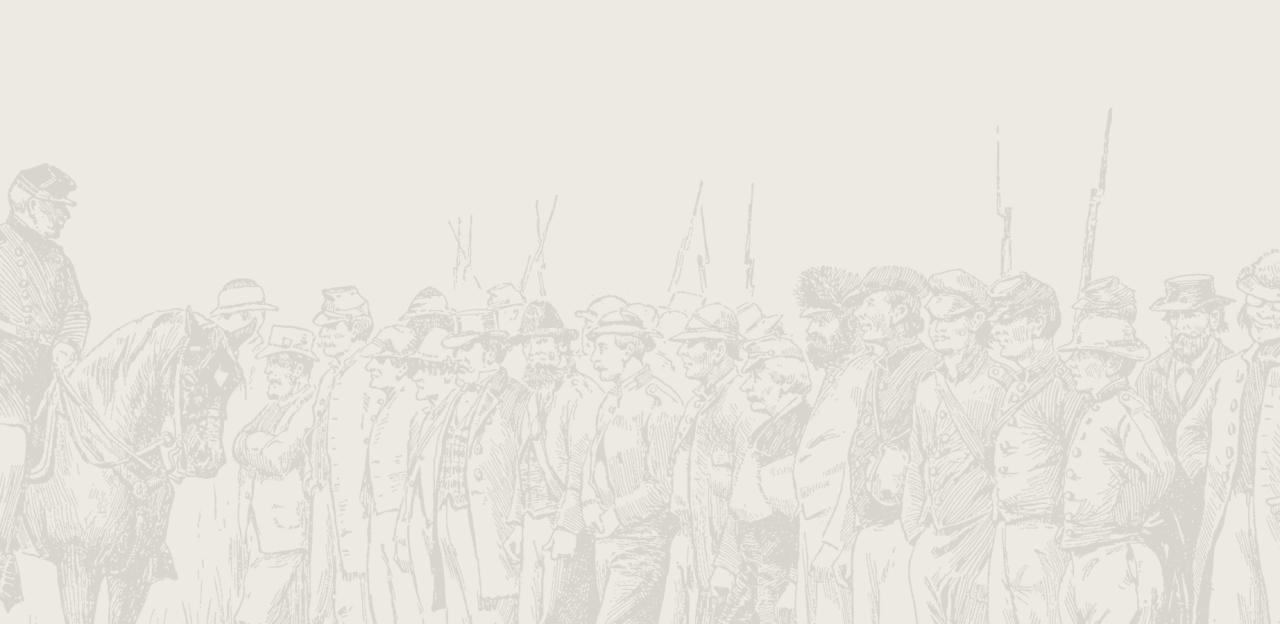Mansfield

The Battle of Mansfield
Sabine Crossroads, Pleasant Grove
In March of 1864, Maj. Gen. Nathaniel Banks, led roughly 30,000 men up the Red River in a movement that had been conceived in part by former General-in-Chief, Henry Halleck. Banks’ mission was to destroy the Confederate army under Maj. Gen. Richard Taylor and capture Shreveport, Louisiana, thus seizing control of the Red River, and further tightening the Federals’ grip on the Confederacy. Though this movement was not line with Lt. Gen. Ulysses S. Grant’s unified strategy for the Federal army, the plan was approved and Banks’ expedition began.
Retreating up the river for most of March, Taylor was slowly collecting reinforcements from Texas and Arkansas, while he looked for a place to make a stand. Finally, in April, Taylor chose a clearing just south of Mansfield as an idea location to strike a blow at the Yankees, and possibly turn the tide of the campaign. Fully aware that his Confederates were outnumbered nearly two to one, Taylor said he would "fight Banks here [Mansfield] if he has a million men."
Taylor knew the Union force would not be routed easily. He created a trap, stationing his men across Mansfield Road in an arc formation, just on the north side of an open field. Maj. Gen. John G. Walker’s three brigades were then placed in a battle line approximately 500 yards on either side of the road. Walker’s force was to take the first hit, with Brig. Gen. Alfred Mouton’s two brigades on Walker’s left there to attack once the Union forces were engaged. Brig. Gen. Thomas Green’s cavalry edged out both flanks. Upon the Union’s arrival, Brig. Gen. Thomas Ransom led a brigade forward but, concerned about hidden Confederate forces, halted. Banks ordered an advance that afternoon, but was rebuffed by Brig. Gen. Albert Lee, who insisted their position was too precarious. Banks reconsidered and called for additional cavalry reinforcements. While Banks waited, Taylor sent his infantry and a battery of artillery forward in an effort to draw the Federals into battle.
After the Yankees failed to take the bait, Taylor ordered the advance of the entire Confederate line. Immediately, Mouton’s division encountered difficulties in the center of the line. Though Mouton managed to rally his men, he was mortally wounded. Walker, however, fared better on the Federal left, and forced a Union retreat in that sector. Very soon, the collapse on Banks’ left led to withdrawal along the whole line, and eventually devolved into a rout in which the Yankees left three pieces of artillery in Confederate hands.
Banks, finally understanding the gravity of the situation, called for additional reinforcements. Brig. Gen. Robert Cameron’s division of the Thirteenth Army Corps hastened to the front to bolster the line, but was delayed by the Federals’ own supply trains. After extricating his troops, Cameron established a battle line approximately one mile south of Moss Plantation. Once more, the Confederates rolled up the Union line. Flush with success, Taylor pushed Walker’s, Polignac’s (who had taken command of Mouton’s division), and Green’s divisions forward, adding to the confusion of the Union retreat.
Federal reinforcements, however, were coming to stem the flood. Without orders, Brig. Gen. William H. Emory quickened his pace to the front, leading his Nineteenth Corps towards the battle. Emory knew a defensible post was vital to support the retreating Federals and to prevent additional Confederate advances. He found a hill bordered by Chatman Bayou Creek and a small orchard, called Pleasant Grove, and decided to make his stand there. He placed approximately 5,000 men across Mansfield Road, forming a wall of soldiers with their rifles aimed at the advancing Confederates. When the Rebels tested this line, Emory’s fire sent them back in a brief retreat.
Refusing to surrender their progress for the day, the Confederates again attacked, this time on the flanks in hopes of rolling up the line as they had done earlier. Seeing this, Emory refused his line, bending it back to repel the Confederates again. Unable to break through, the Rebels retreated as darkness fell.
Though Taylor was frustrated with the outcome of the day, Mansfield was still a strategic victory for the Confederates. Taylor displayed excellent generalship, maneuvering his force to overwhelm individual parts of the larger Union army. Taylor and his Confederates also captured more pieces of Union army equipment and artillery, and sustained approximately 1,000 casualties. In comparison, the Union army sustained 2,800 casualties and was unable to seize nearly as many Confederate supplies.


